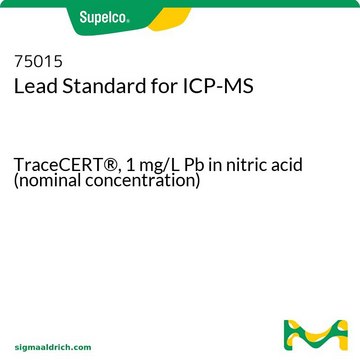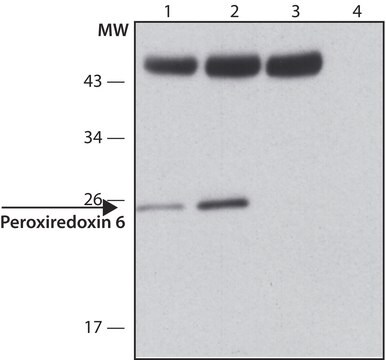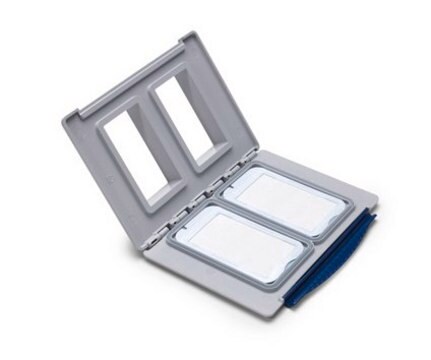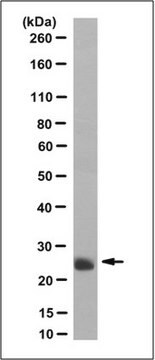MABN1796
Anti-LRP1 Antibody, 85 kDa subunit Antibody, clone 6F8
clone 6F8, from mouse
Synonyme(s) :
Prolow-density lipoprotein receptor-related protein 1, A2MR, Alpha-2-macroglobulin receptor, APER, Apolipoprotein E receptor, CD19, Low-density lipoprotein receptor-related protein 1 85 kDa subunit, LRP-85
About This Item
Produits recommandés
Source biologique
mouse
Niveau de qualité
Forme d'anticorps
purified immunoglobulin
Type de produit anticorps
primary antibodies
Clone
6F8, monoclonal
Espèces réactives
human, mouse
Technique(s)
ELISA: suitable
western blot: suitable
Isotype
IgG1κ
Numéro d'accès NCBI
Conditions d'expédition
ambient
Modification post-traductionnelle de la cible
unmodified
Informations sur le gène
human ... LRP1(4035)
Description générale
Spécificité
Immunogène
Application
Neuroscience
ELISA Analysis: A representative lot was employed as the capture antibody for the detection of LRP1 in different human brain regions by sandwich ELISA. a strong positive correlation between LRP1 and PSD95 regional distribution was observed (Shinohara, M., et al. (2013). Acta Neuropathol. 125(4):535-547).
Western Blotting Analysis: A representative lot detected siRNA-mediated LRP1 knockdown in human brain vascular pericytes (Casey, C.S., et al. 2015. J. Biol. Chem. 290(22):14208-14217).
Note: The use of 5% skim milk as the blocking agent and 1-2 hr instead of overnight primary incubation time is recommended for Western blotting application to minimize non-specific background.
Qualité
Western Blotting Analysis: 0.5 µg/mL of this antibody detected LRP1 85 kDa subunit in 10 µg of mouse whole brain tissue lysate.
Description de la cible
Forme physique
Stockage et stabilité
Autres remarques
Clause de non-responsabilité
Vous ne trouvez pas le bon produit ?
Essayez notre Outil de sélection de produits.
En option
Code de la classe de stockage
12 - Non Combustible Liquids
Classe de danger pour l'eau (WGK)
WGK 1
Certificats d'analyse (COA)
Recherchez un Certificats d'analyse (COA) en saisissant le numéro de lot du produit. Les numéros de lot figurent sur l'étiquette du produit après les mots "Lot" ou "Batch".
Déjà en possession de ce produit ?
Retrouvez la documentation relative aux produits que vous avez récemment achetés dans la Bibliothèque de documents.
Notre équipe de scientifiques dispose d'une expérience dans tous les secteurs de la recherche, notamment en sciences de la vie, science des matériaux, synthèse chimique, chromatographie, analyse et dans de nombreux autres domaines..
Contacter notre Service technique








